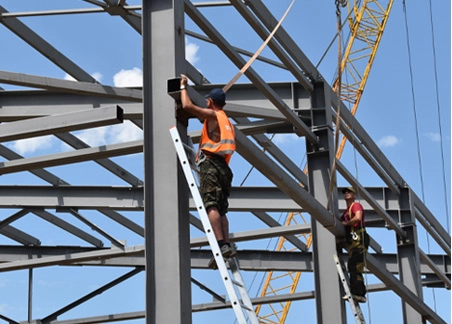
-
 Afrikaans
Afrikaans -
 Albanian
Albanian -
 Amharic
Amharic -
 Arabic
Arabic -
 Armenian
Armenian -
 Azerbaijani
Azerbaijani -
 Basque
Basque -
 Belarusian
Belarusian -
 Bengali
Bengali -
 Bosnian
Bosnian -
 Bulgarian
Bulgarian -
 Catalan
Catalan -
 Cebuano
Cebuano -
 Corsican
Corsican -
 Croatian
Croatian -
 Czech
Czech -
 Danish
Danish -
 Dutch
Dutch -
 English
English -
 Esperanto
Esperanto -
 Estonian
Estonian -
 Finnish
Finnish -
 French
French -
 Frisian
Frisian -
 Galician
Galician -
 Georgian
Georgian -
 German
German -
 Greek
Greek -
 Gujarati
Gujarati -
 Haitian Creole
Haitian Creole -
 hausa
hausa -
 hawaiian
hawaiian -
 Hebrew
Hebrew -
 Hindi
Hindi -
 Miao
Miao -
 Hungarian
Hungarian -
 Icelandic
Icelandic -
 igbo
igbo -
 Indonesian
Indonesian -
 irish
irish -
 Italian
Italian -
 Japanese
Japanese -
 Javanese
Javanese -
 Kannada
Kannada -
 kazakh
kazakh -
 Khmer
Khmer -
 Rwandese
Rwandese -
 Korean
Korean -
 Kurdish
Kurdish -
 Kyrgyz
Kyrgyz -
 Lao
Lao -
 Latin
Latin -
 Latvian
Latvian -
 Lithuanian
Lithuanian -
 Luxembourgish
Luxembourgish -
 Macedonian
Macedonian -
 Malgashi
Malgashi -
 Malay
Malay -
 Malayalam
Malayalam -
 Maltese
Maltese -
 Maori
Maori -
 Marathi
Marathi -
 Mongolian
Mongolian -
 Myanmar
Myanmar -
 Nepali
Nepali -
 Norwegian
Norwegian -
 Norwegian
Norwegian -
 Occitan
Occitan -
 Pashto
Pashto -
 Persian
Persian -
 Polish
Polish -
 Portuguese
Portuguese -
 Punjabi
Punjabi -
 Romanian
Romanian -
 Russian
Russian -
 Samoan
Samoan -
 Scottish Gaelic
Scottish Gaelic -
 Serbian
Serbian -
 Sesotho
Sesotho -
 Shona
Shona -
 Sindhi
Sindhi -
 Sinhala
Sinhala -
 Slovak
Slovak -
 Slovenian
Slovenian -
 Somali
Somali -
 Spanish
Spanish -
 Sundanese
Sundanese -
 Swahili
Swahili -
 Swedish
Swedish -
 Tagalog
Tagalog -
 Tajik
Tajik -
 Tamil
Tamil -
 Tatar
Tatar -
 Telugu
Telugu -
 Thai
Thai -
 Turkish
Turkish -
 Turkmen
Turkmen -
 Ukrainian
Ukrainian -
 Urdu
Urdu -
 Uighur
Uighur -
 Uzbek
Uzbek -
 Vietnamese
Vietnamese -
 Welsh
Welsh -
 Bantu
Bantu -
 Yiddish
Yiddish -
 Yoruba
Yoruba -
 Zulu
Zulu


నవం . 08, 2024 14:09 Back to list
Adjustable Long-Reach Tools for Safe High-Voltage Electrical Work
The Telescopic Hot Stick A Versatile Tool for Safety and Efficiency
In the realm of electrical maintenance and safety, few tools stand out as prominently as the telescopic hot stick. This ingenious device revolutionizes the way utility workers and electricians perform their tasks, particularly when it comes to working with high-voltage power lines. Its design and functionality have made it a quintessential asset for safety and efficiency in the field.
Understanding the Telescopic Hot Stick
A telescopic hot stick, often referred to as a hot stick or a stick, is an insulated pole that extends and retracts, allowing workers to perform various tasks from a safe distance. Its primary function is to enable linemen and electricians to manipulate electrical equipment without having to come into direct contact with potentially dangerous live wires. Typically made from fiberglass or other high-dielectric materials, the device provides vital insulation to protect the user from electrical shocks.
The stick can extend to significant lengths—often exceeding 20 feet—making it invaluable for reaching high-voltage lines found on utility poles or substations. The adaptability of the telescopic hot stick not only enhances safety but also increases the operational efficiency by reducing the time and manpower needed to perform tasks at elevated heights.
Applications in the Field
In practical terms, the telescopic hot stick serves multiple purposes. It is commonly used to
1. Perform Switch Operations Utility workers can use the hot stick to operate switches and disconnects from a distance, thus maintaining a safe environment while working on energized lines. 2. Test Voltage Many hot sticks are equipped with voltage testing devices, allowing workers to determine whether a line is live without needing to approach it directly. This is achieved through built-in features like a digital voltmeter or a neon bulb.
telescopic hot stick

3. Inspect and Manipulate Equipment The hot stick can be utilized to lift or remove debris from power lines or to reposition conductors without physically climbing poles or getting too close to energized equipment.
4. Maintain Lightning Rods and Other Fixtures The extended reach of the hot stick makes it practical for adjusting and maintaining various accessories associated with electrical systems, enhancing overall safety and functionality.
The Safety Advantages
The foremost advantage of using a telescopic hot stick is safety. Electrical injuries can be catastrophic, leading to severe burns, falls, or even fatalities. By enabling workers to handle tasks from a considerable distance, the hot stick significantly reduces the risk of electric shock. Additionally, the materials used in its construction ensure that even in wet conditions, the user remains insulated.
Moreover, the tool promotes compliance with safety regulations outlined by organizations like the Occupational Safety and Health Administration (OSHA) and the Institute of Electrical and Electronics Engineers (IEEE). These guidelines stress the necessity of maintaining safe working distances when dealing with high-voltage lines, making the hot stick not just a convenience but a vital component in adhering to industry standards.
Conclusion
In summary, the telescopic hot stick is more than just a piece of equipment; it represents a commitment to safety, efficiency, and innovation in the electrical industry. Its versatility in application, combined with the substantial safety benefits it provides, makes it an indispensable tool for electricians and utility workers alike. As the electric grid continues to evolve and expand, the importance of such tools will only continue to grow, underscoring the need for ongoing advancements in utility work safety practices. With the utilization of the telescopic hot stick, the electrical workforce can operate with increased confidence, reducing hazards and ensuring the reliability of the power supply for communities.
Latest news
What Are Construction Tools and How Are They Used?
NewsJul.11,2025
Professional-Grade Duct Rodding Tools for Superior Cable Installation
NewsJul.11,2025
Enhancing Safety and Efficiency with Modern Hot Stick Solutions
NewsJul.11,2025
Empowering Cable Installation with Advanced Rodder Solutions
NewsJul.11,2025
Elevate Your Cable Installation Projects with Cable Pulling Tools
NewsJul.11,2025
Efficient Cable Handling Solutions: Cable Rollers for Sale
NewsJul.11,2025











